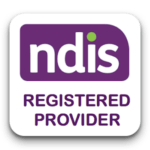If you are interested in learning how to become a Behaviour Support Practitioner in Australia, you are embarking on a path of profound impact and professional fulfilment. This essential role within the National Disability Insurance Scheme (NDIS) framework involves implementing behavioural strategies to enhance individuals’ lives.
Interested in exploring how to become a Behaviour Support Practitioner in Australia? Reach out to us today for guidance and support.
Understanding the Role of a Behaviour Support Practitioner
Behaviour Support Practitioners in Australia play a pivotal role in the lives of people ranging from children, adolescents, adults and older adults. Their work revolves around understanding individual behavioural patterns and crafting strategies to improve quality of life. The practice is underpinned by the science of Applied Behaviour Analysis (ABA), a scientific approach focused on understanding and improving behaviour in diverse situations.
The role demands not only a strong grasp of behavioural theories but also the ability to apply these theories in real-life contexts. Practitioners develop tailored plans encompassing Positive Behaviour Support, Trauma-informed care, Collaborative Problem-Solving Models, and more, always aligning with the NDIS framework. This comprehensive approach ensures every individual’s unique needs are met, fostering an environment where they can thrive.
Educational Pathways and Specialised Training
Starting your journey requires a solid educational foundation. A bachelor’s degree in psychology, social work, education, or a related field forms the foundational groundwork. The importance of establishing a strong base in behavioural studies or psychology provides a significant advantage in the field.
Having a master’s degree in Applied Behaviour Analysis or a similar discipline is invaluable. Such advanced education equips you with necessary skills and a thorough understanding of behavioural principles. Australian universities offer various programs catering to this need, blending theoretical knowledge with practical application.
During your master’s program, focus on courses that align with Behaviour Support Practitioner competencies. Topics like behavioural assessment, intervention strategies, and ethical considerations in behavioural practice are crucial. Besides studying, engaging in professional workshops and seminars enhances your understanding and keeps you updated with the latest practices in behavioural support. Are you close to completing your university degree? Watch our most recent webinar to find out the next steps of how to become a positive behaviour support practitioner.

Considering a Change to a Behaviour Support Role from Another Relevant Career and Educational Background?
Professionals from teaching, counselling, and related fields have a unique opportunity to transition into a career as a Behaviour Support Practitioner through an alternative pathway. This pathway recognises the value of your existing skills and experiences, providing a tailored approach to entering this field.
1. Application and Declaration Form
Start by submitting an application along with a declaration form. This form is your initial step in expressing your commitment to transitioning into this new role.
2. Practice as a Core Practitioner Under Supervision
Initially, you will practice as a core practitioner under the supervision of a qualified Behaviour Support Practitioner. This stage allows you to apply your existing skills in a new context while gaining specialised experience.
3. Implement a Professional Development Plan
Develop and follow a professional development plan tailored to your learning needs. This plan should focus on acquiring specific skills and knowledge essential for a Behaviour Support Practitioner.
4. Compile a Portfolio of Evidence
Build a portfolio that showcases your practical experience and learning in behaviour support. This portfolio is a critical component that demonstrates your competency in the field.
5. Complete a Self-Assessment
Conduct a thorough self-assessment to evaluate your skills and knowledge. This process helps identify areas of strength and those requiring further development.
6. Seek Endorsement
Finally, obtain endorsement from a supervisor or a senior practitioner. This endorsement is a formal acknowledgment of your readiness and capability to function effectively as a Behaviour Support Practitioner.
This alternative pathway offers a structured and supportive transition for those with valuable experience in teaching, counselling, or similar professions. By following these steps, you can effectively leverage your background and embark on a rewarding new career in behaviour support. Kameleon Group boasts a wide network of locations throughout Australia, including Sydney, Gold Coast, Melbourne, Perth, Hobart, Brisbane, and more. This means that if you relocate, you can maintain your employment with us, seamlessly transitioning to a different branch within our expansive network.
Gaining Further Experience and Credentials - Becoming a BCBA
To become a Board Certified Behaviour Analyst (BCBA) in Australia, gaining the right experience and credentials is crucial.
1. Obtain a Relevant Degree
Complete a degree from an APBA-accredited program, ABAI-accredited program, or a program recognised by ABAI (Tier 1, 2A, or 2B). This foundational step ensures that your education aligns with the standards required in the field of Applied Behaviour Analysis.
2. Accumulate Supervised Fieldwork – Kameleon Group can provide this BCBA Supervision to our Behaviour Support Practitioners
- Complete 2,000 hours of supervised fieldwork. This practical experience is essential to apply theoretical knowledge in real-world settings.
Monthly Supervised Fieldwork Requirements
- Ensure at least 5% of your fieldwork hours are under direct supervision.
- Have at least one observation by your supervisor per month.
- Engage in a minimum of four contacts with your supervisor each month. These contacts are opportunities for guidance, feedback, and professional development.
3. Pass the Certification Examination
After completing your degree and supervised fieldwork, the next step is to pass a comprehensive examination. This exam tests your knowledge and practical skills in Applied Behaviour Analysis, ensuring you are ready to practice effectively in the field.
4. Become Certified
Once you pass the examination, you’ll achieve certification as a Board Certified Behaviour Analyst (BCBA). This certification is proof of your expertise and readiness to make a positive impact in the lives of those requiring behavioural support.
Holding BCBA certification will assist you in paving your way to a successful career as a Behaviour Support Practitioner, and increases the available promotion opportunities toward roles as Clinical Lead and Clinical Supervisor as your career progresses. This path requires dedication and a commitment to continuous learning and professional development, but the rewards of making a meaningful difference in people’s lives are immeasurable.
The NDIS Framework
The NDIS provides support and funding to Australians with disabilities. If you are interested in how to become a Behaviour Support Practitioner Australia, understanding NDIS guidelines is crucial for developing compliant and effective strategies. It is important to align your behavioural support plans with NDIS policies. This alignment ensures that your interventions are not only effective but also comply to national standards. Familiarise yourself with NDIS’s latest updates and guidelines, as they frequently update to better serve the community.
Continual Learning and Professional Development
For those aspiring to learn how to become a behaviour support practitioner, it’s crucial to recognise that behavioural support is a field characterised by constant development, with new research and methodologies emerging regularly. Committing to ongoing education and professional development is essential. This commitment can take the form of attending industry conferences, enrolling in advanced courses, or participating in relevant training sessions.
Staying current with the latest developments in behavioural support is necessary to maintain the effectiveness and relevance of your practice. It also provides opportunities to discover and integrate new methods and approaches, enhancing your capabilities as a Behaviour Support Practitioner.

Employment Opportunities and Career Growth
Australia offers a diverse range of employment opportunities for Behaviour Support Practitioners. You can find roles in educational institutions, healthcare facilities, private practices, and community organisations. When seeking employment, consider organisations that align with your values and offer opportunities for growth and learning.
Prepare for interviews by focusing on your knowledge of ABA, experience with behaviour support plans, and understanding of the NDIS framework. Demonstrating your commitment to ethical practice and continual learning will make you a desirable candidate. Searching for how to become a behaviour support practitioner or looking for employment opportunities? Submit your job application with Kameleon Group today.
Embarking on the path to becoming a Behaviour Support Practitioner in Australia is a journey of commitment, continuous learning, and passion for making a difference. With a solid educational background, practical experience, and a deep understanding of ABA and the NDIS framework, you can contribute positively to many lives.













